The catchphrase ‘there’s no transition without transmission’ seems to get thrown around more and more. Much of the discussion that follows centers around increasing capacity to allow for more wind and solar farms. But perhaps less discussed, is the emerging challenges that face the existing transmission network in ensuring system security.
In recent months, two unrelated incidences of transmission tower failure resulted in separations within the NEM:
- In South Australia, thunderstorms and strong winds toppled a transmission tower near Tailem Bend. This resulted in a trip of the Heywood interconnector and caused the SA region to be ‘frequency islanded’ for one week.
- In Tasmania, a landslide displaced the foundations of a transmission tower near the town of Poatina. The adjoining line is a key part of the transmission backbone that connects the Northern and Southern parts of the state’s network.
Both events temporarily elevated the level of risk in operating the power system securely. And the SA incident in particular, incurred significant market costs to the tune of $31.5M until the line was restored.
Interconnectors
Interconnectors are the bridges that link the five regions together and allow for inter-regional exports and imports. However, unlike a bridge, they are not so much a single physical structure. They are, instead, a construct of the mathematical model that underpins the NEM (i.e. the NEM Dispatch Engine).
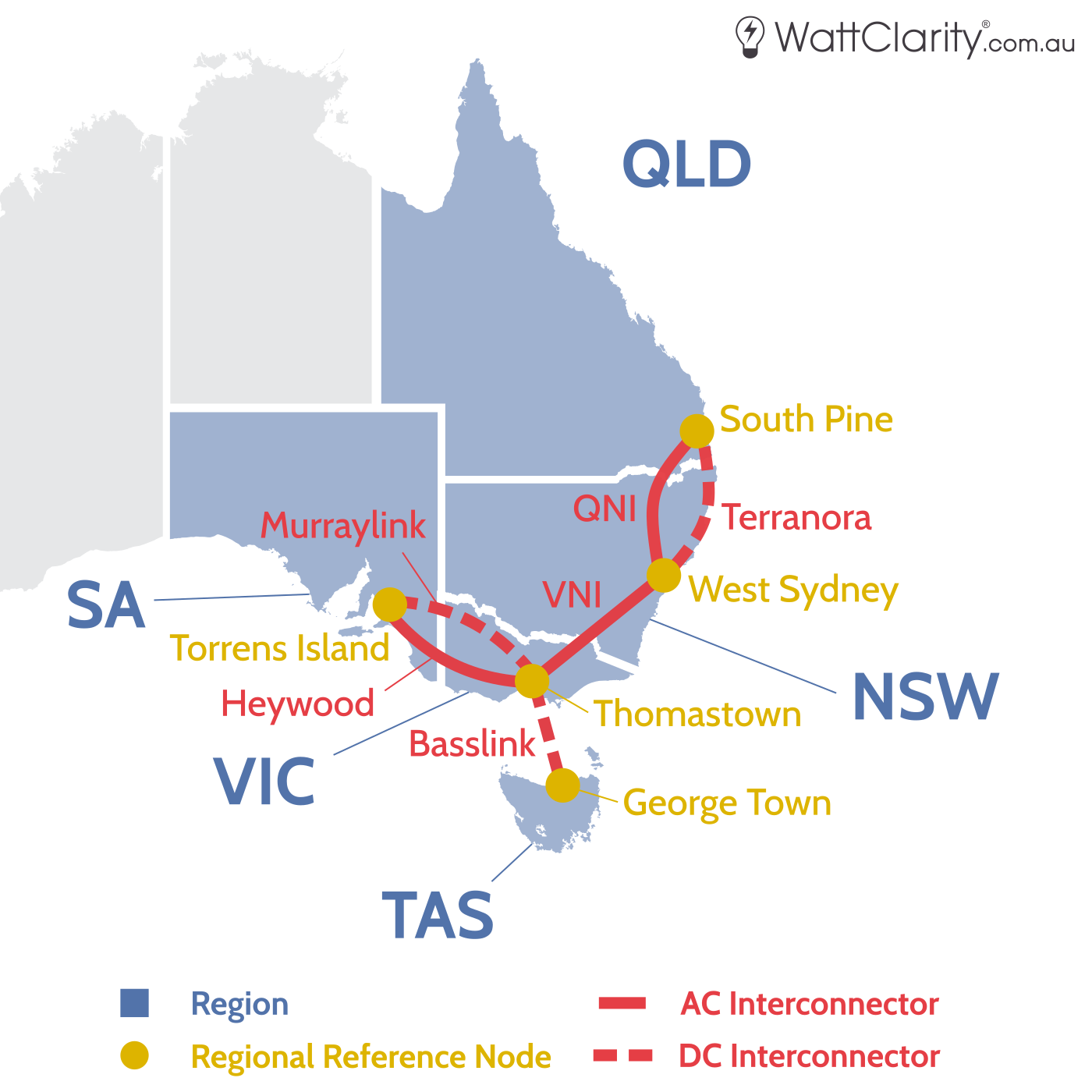
A simple but concise 5-node model representation of the NEM.
There are currently six interconnectors in the NEM, and they come in two forms:
- DC (Direct Current) – Basslink (TAS to VIC), Murraylink (VIC to SA) and Terranora (NSW to QLD).
- AC (Alternating Current) – Heywood (VIC to SA), VNI (VIC to NSW) and QNI (NSW to QLD).
It’s probably easier to conjure up an image of a DC interconnector, as the infrastructure itself is more-or-less a discrete cable (or group of cables) from one region to another with a terminal on either end.
AC interconnectors on the other hand are more abstract. In these cases, the ‘interconnector’ is all parts of a long complex series of essential transmission lines that connect one Regional Reference Node (RRN) to another, and it can even be the aggregate flow of several cross-regional transmission paths.
It is these AC interconnectors that maintain a common system frequency across regions, as the DC interconnectors have no such ability. A key benefit of AC interconnection is that some tasks (such as procuring enough energy to manage system frequency) can be shared across regions. However, an unexpected trip of one of these interconnectors can lead to rather large system security issues, price spikes and other economic consequences as one region is suddenly ‘on its own’ to manage supply, frequency, and the other complexities of operating an independent electricity grid.
Islanding Events
As one observant WattClarity reader recently noted, the term ‘islanding’ is often used interchangeably to refer to one of three different types of events that can occur in the NEM:
- Economic Islanding – When all (AC and/or DC) interconnectors between two regions are constrained, economic islands are formed on either side as regional spot prices can separate (sometimes significantly). E.g. If VNI was the only interconnector in the NEM to be bound, NSW & QLD would form one economic island and VIC, SA & TAS would form another.
- Frequency Islanding –When one or more regions lose frequency synchronisation, generally because an AC interconnector(s) is offline, a frequency island forms. E.g. If Heywood is offline but Murraylink is online, SA is frequency islanded.
- Electrical Islanding – When all (AC and/or DC) interconnectors linked to a region are offline, an electrical island forms. E.g. If QNI and Terranora are both offline simultaneously, QLD is electrically islanded.
Economic islandings occur often, while frequency and electrical islandings are rare and need to be managed carefully when they do occur.
The event we saw in South Australia last month was the second major case within three years that SA was ‘frequency islanded’ from the rest of the NEM for an extended period of time. In a somewhat similar incident in January 2020, a transmission tower collapse on the Victorian side of the border caused the trip of Heywood, leaving behind a $90M+ FCAS bill in the process.
Islandings of this type are a particular concern for South Australia. As a region that deals with comparatively high levels of Variable Renewable Energy penetration and periods of ultra-low (or even ‘negative’) demand, the dynamics of its power system change dramatically when it is unexpectedly islanded in this way.
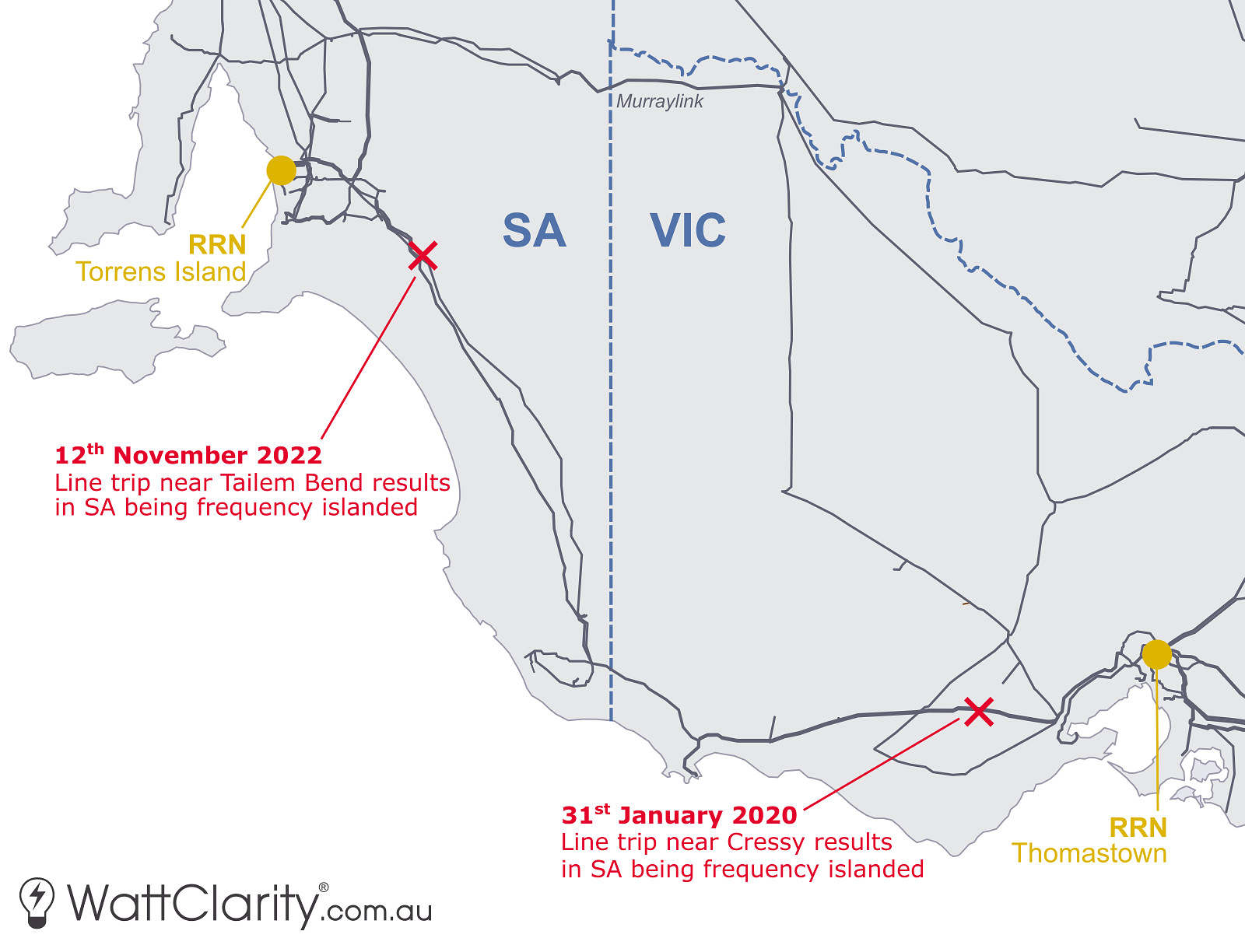
Two different transmission tower failures within three years have ‘frequency islanded’ SA from the rest of the NEM
If you remember, an interconnector is any part of a series of essential lines that connect two RRNs – the image above may help to depict the physical extent of the Heywood interconnector and show how two very geographically different tower collapses could cause similar contingency events.
Of course, it is not always the case that tower failure is the root cause of an islanding event as there are thousands of electrical components that compose what is mathematically modelled as an interconnector. The table below has been compiled to list all known frequency islanding events in the NEM back to 2010.
|
Date Start |
Date End |
Region(s) Islanded |
Cause(s) |
Description |
| 12th November 2022 | 19th November 2022 | SA | Transmission tower failure | The fall of a transmission tower close to Tailem Bend causes the region to be islanded for a period of 7 days until a temporary tower is erected. |
|
25th May 2021
|
QLD | Unit trip (Callide C explosion) | QLD was found to be briefly islanded from the rest of the NEM for 15-20 seconds after a series of electrical reactions that were initiated by the Callide C explosion. | |
| 2nd March 2020 | SA | Related to previous incident | With only a single temporary 500kV line in place after the previous incident, conditions require the AEMO to separate SA and VIC at the Heywood terminal. Flows stop on the interconnector for roughly 10 hours in total. | |
| 31st January 2020 | 17th February 2020 | SA | Transmission Tower Failure | The collapse of six transmission towers near Cressy, VIC – part of the 500kV line that forms the Heywood Interconnector – force SA to be islanded for 18 days until a temporary line is reinstalled. |
| 4th January 2020 | QLD/ NSW & VIC/SA | Several line faults caused by bushfire activity | Severe bushfire activity in the Snowy Mountains area cause a series of trips along multiple transmission lines in New South Wales and Victoria. As a result, two frequency islands were formed:
The two islands were later resynchronished approximately 7 hours later. |
|
| 16th November 2019 | SA | Communication equipment issue | South Australia is frequency islanded for five hours after two 500kV lines trip due to “spurious signals from telecommunications equipment that caused the maloperation of protection equipment on both circuits” | |
| 25th August 2018 | QLD, SA | Circuit fault caused by lightning strike | A single lightning strike within 300m of a transmission tower near Inglewood, QLD triggers a series of reactions, that eventually results in a rare double islanding event after both QNI and Heywood trip. Both interconnectors were restored within 70 minutes. | |
| 1st December 2016 | SA | Equipment failure | A single phase to earth fault on a 500kV section of the Heywood Interconnector within Victoria resulted in SA being frequency separated for approximately 4 hours. | |
| 28th September 2016 | SA | Transmission Tower Failure | Two tornadoes some 170km apart simultaneously cause multiple transmission lines to trip, triggering a chain of reactions that trip the Heywood interconnector offline, and eventually lead to SA’s notorious ‘system black’. Flow on the interconnector stopped for roughly 3 hours. | |
| 1st November 2015 | SA | Substation fault | A trip at the South East Substation in caused by an incompatible protection relay configuration. SA operated as a frequency island for 35 minutes in total. | |
| 13th November 2011 | QLD | Line fault related to thunderstorms and lightning | A trip of the QNI interconnector is caused by a one phase to ground fault. QLD is frequency islanded from the rest of the NEM for 14 minutes. | |
If you spot any missing incidents or have any corrections, please leave a comment below.
As QLD and SA have only one AC interconnection with their neighbours (and both contain single double-circuited transmission lines), the risk of a frequency islanding event is elevated. The risk is much lower in NSW and VIC as multiple geographically dispersed lines would need to trip simultaneously. This may also be the case for SA, once Project EnergyConnect is completed in the coming years.
Without AC interconnection, TAS is not frequency synchronised with the mainland regions (hence technically always ‘frequency islanded’) although Basslink’s technology uniquely does allow for transfer of FCAS. The region has to deal with its own set of issues when Basslink is completely offline (i.e. when it becomes ‘electrically islanded’) as was the case for an extended period in 2016.
Transmission Tower Failures
The second component of SA’s islanding event was the collapse of a tower that carried a critical transmission line. A combination of factors can be involved in a transmission tower failure such as extreme weather events, corrosion, structural inadequacy, engineering defects or even sabotage. In Australia, it has been mother nature who has delivered the most knockout blows to the transmission network.
I’ve collated the list below to show known tower failures in the NEM since 2000 to present a bigger picture of how often these have occurred and what causes have been involved.
|
Date |
Approx. Location |
Cause(s) |
Description |
| 12th November 2022 | Tailem Bend, SA | Thunderstorms / Strong Winds | 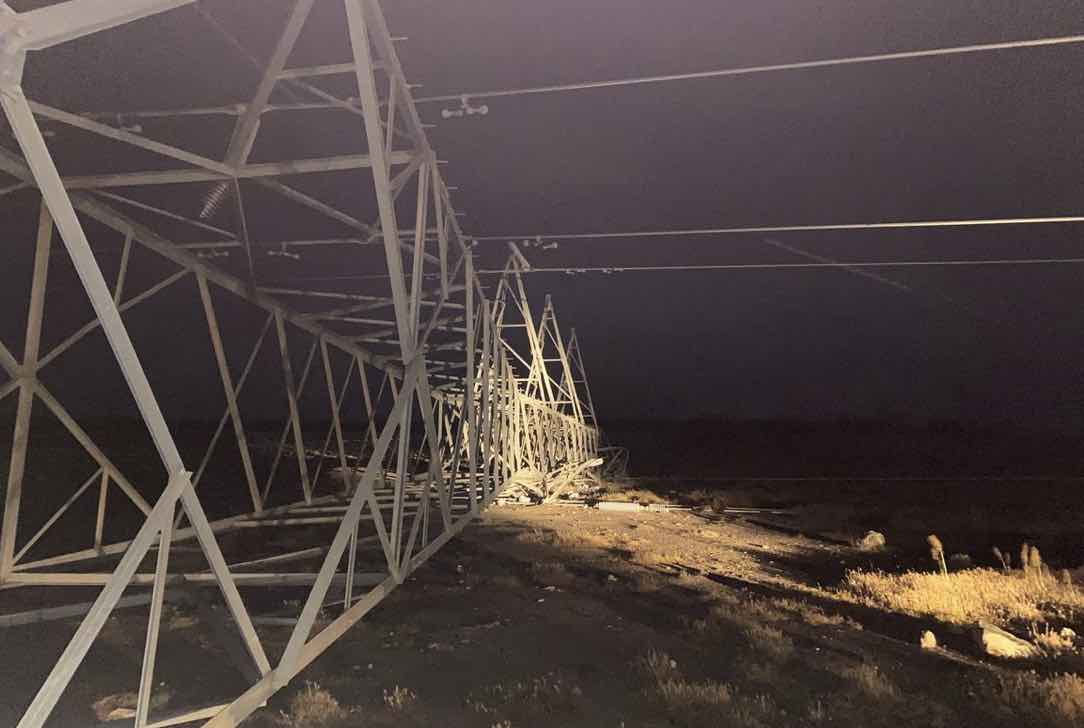
Source: ElectraNet Thunderstorms and strong winds bring down a transmission tower near Tailem Bend. |
| 14th October 2022 | Poatina, TAS | Landslide / Flooding | 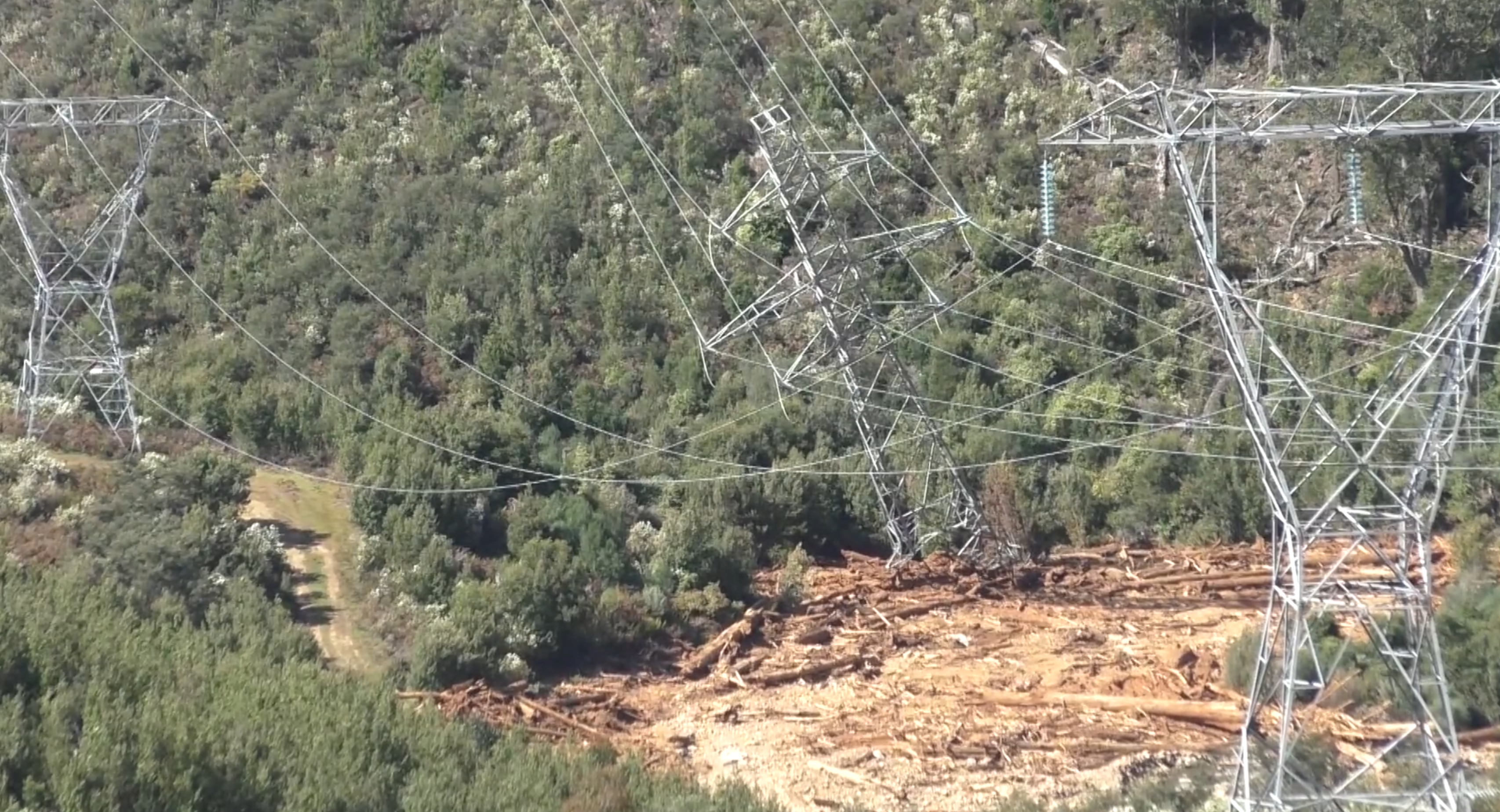
Source: TasNetworks A landslide near the town of Poatina displaces the foundations of a tower carrying a 220kV line that runs through the middle of the state. |
| 7th May 2020 | Tamworth, NSW | Thunderstorms / Strong Winds | 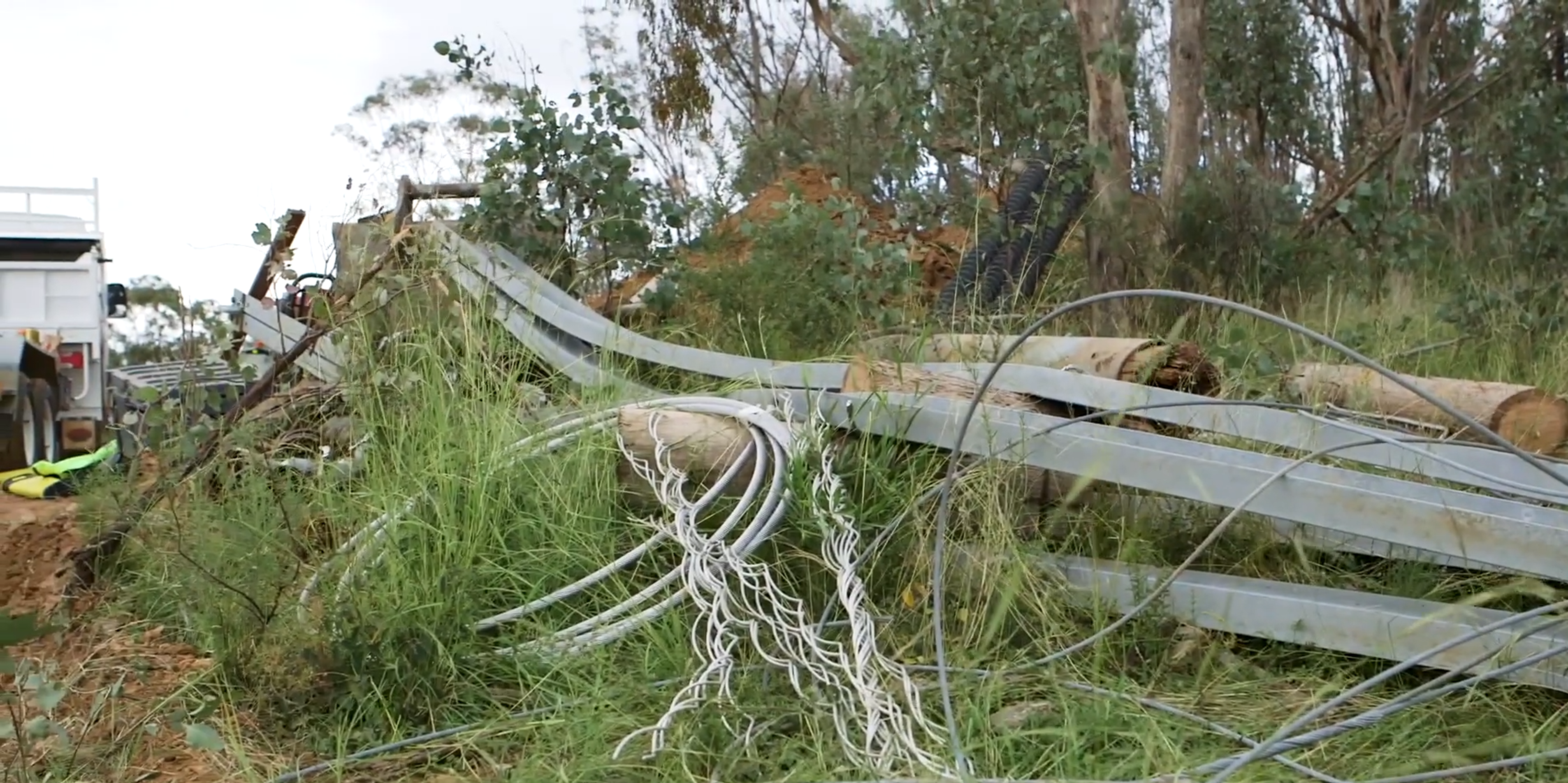
Source: TransGrid A section of the QNI interconnector that lies near Tamworth is damaged during a thunderstorm. |
| 31st January 2020 | Cressy, VIC | Thunderstorms / Strong Winds | 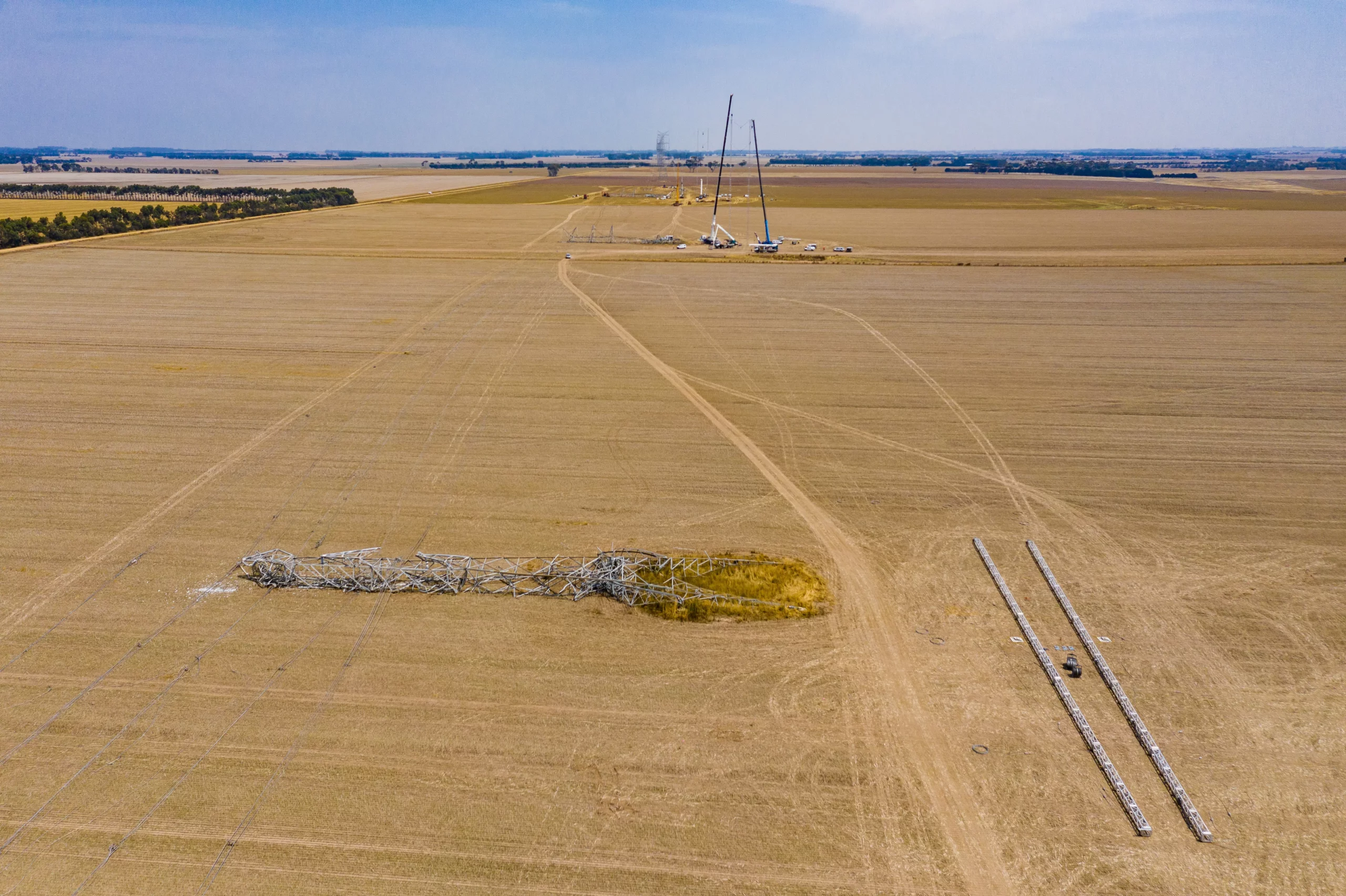
Source: Energy Networks Australia Six transmission towers that form part of the Heywood Interconnector collapse in Western Victoria. |
| 4th January 2020 | Gadara, NSW | Bushfires | 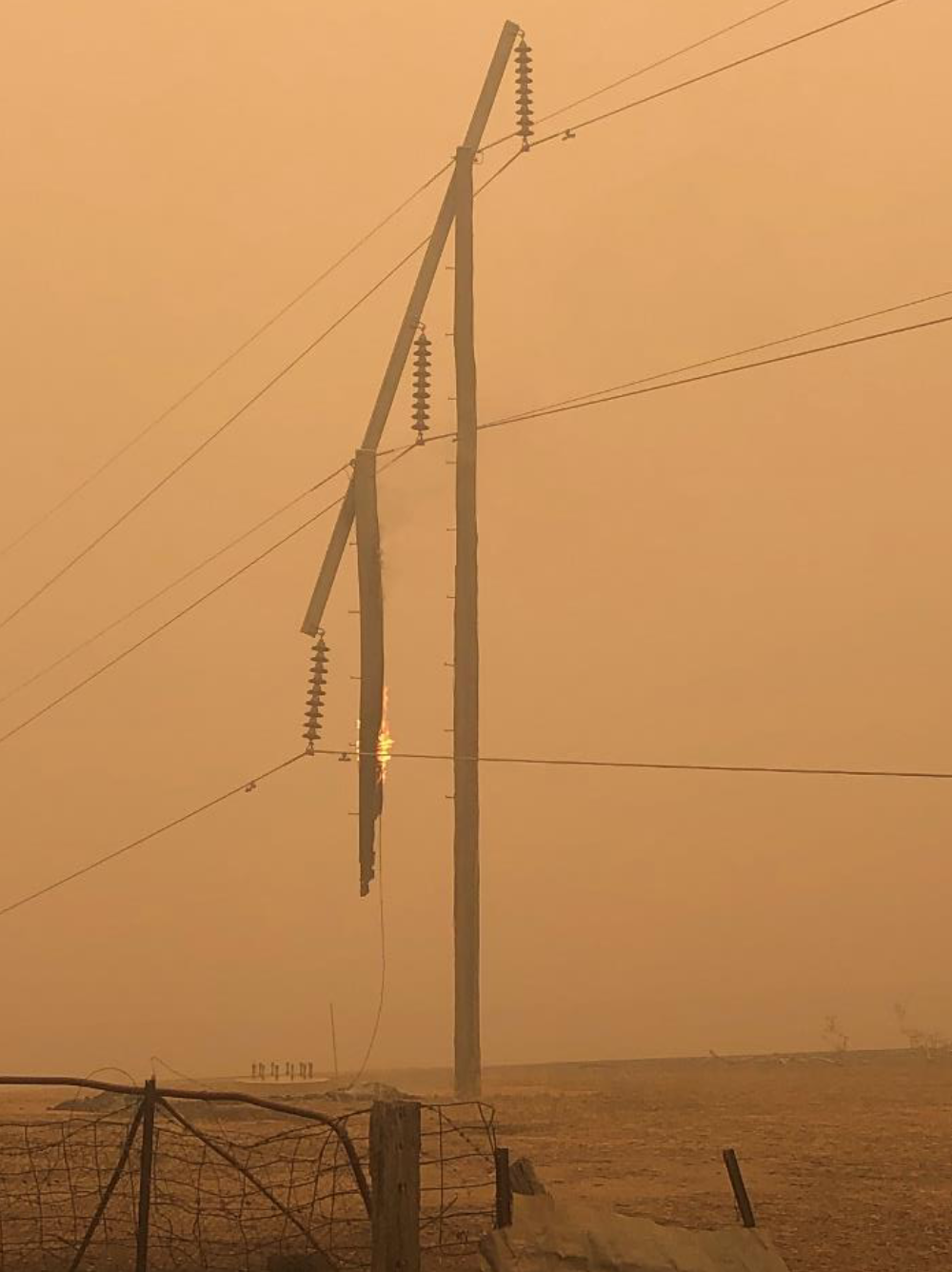
Source: TransGrid Bushfires burn through several wood pole structures in Southern NSW. Parts of the VNI interconnector are temporarily shut off. |
| 31st March 2017 | Clarke Creek, QLD | Tropical Cyclone Debbie / Flooding | 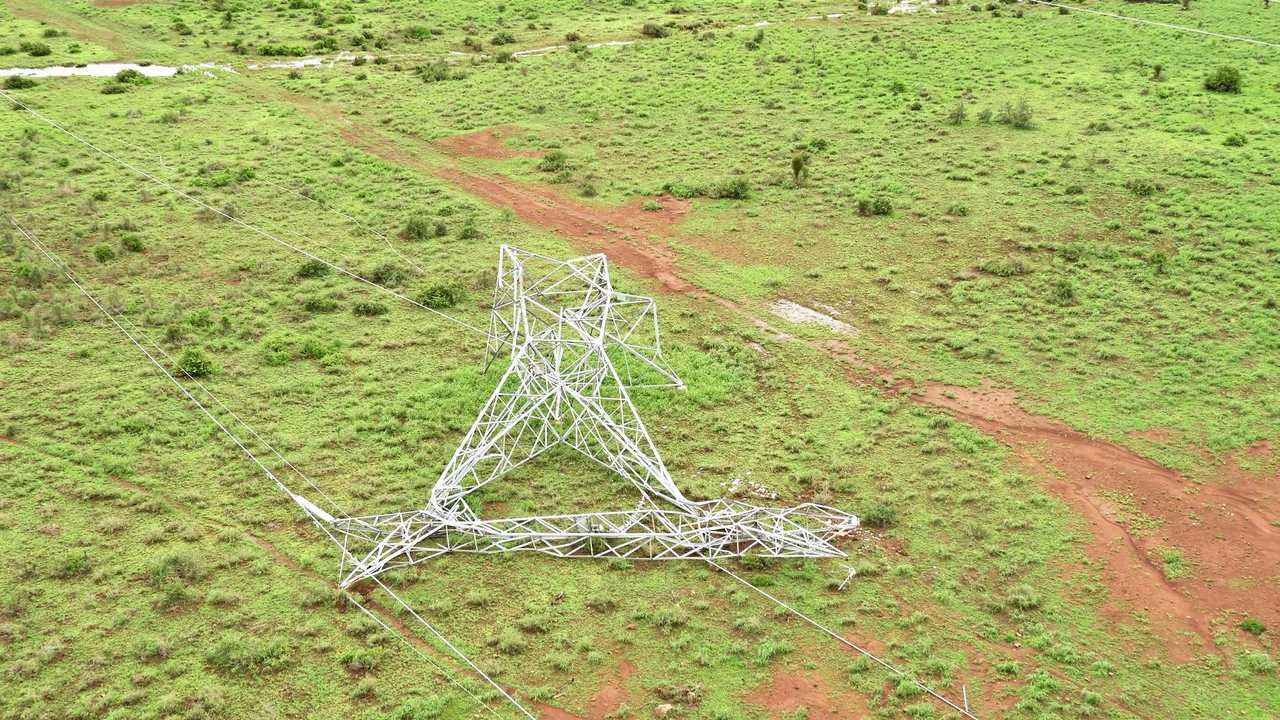
Source: Powerlink Flooding associated with Tropical Cyclone Debbie causes several towers to fail. In total, nineteen transmission towers are replaced after being damaged by the floodwaters. |
| 28th September 2016 | Melrose, SA, and other areas of the state |
Tornadoes / Strong Winds | 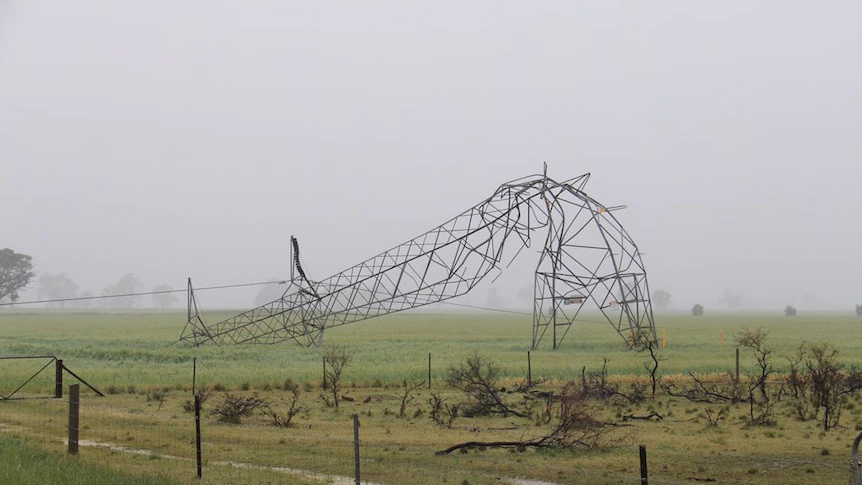
Source: ABC Several towers collapse near the town of Melrose, later found to be one of the root causes of the SA system black event. In total, more than twenty transmission towers across the state collapsed during the weather event. |
| 15th January 2014 | Pyramid Hill, VIC | Thunderstorms / Strong Winds | Six towers fail during a thunderstorm on the 220kV Bendigo to Kerang line in a similar incident to 2010. It was later stated that the towers on the line, constructed in 1961, were structurally inadequate for high-intensity winds. |
| 3rd February 2011 | Cardwell, QLD | Tropical Cyclone Yasi / Strong Winds | Two transmission towers in North Queensland are ‘flattened’ by cyclonic winds. Wind-borne debris also cause several line trips in the area. |
| 12th January 2010 | Pyramid Hill, VIC |
Thunderstorms / Strong Winds | 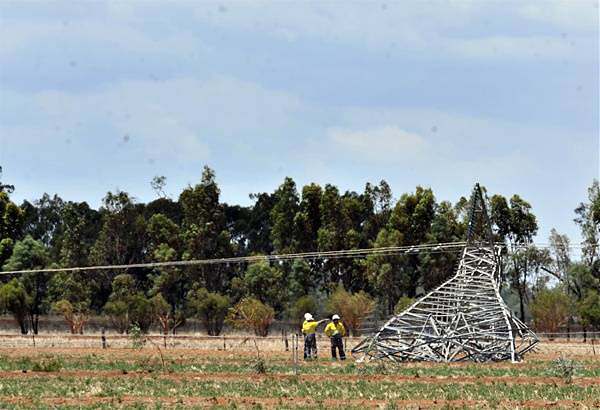
Source: Bendigo Advertiser Thunderstorms and strong winds topple five towers on the 220kV Bendigo to Kerang line in Northern Victoria. |
| 12th December 2009 | North-East Victoria |
Bushfires / Strong Winds | One suspension tower fails on the 330kV South Morang to Dederang line – from a combination of north-westerly winds, and the convection effect of bushfires. |
| 21st September 2009 | Broken Hill, NSW | Dust Storms / Strong Winds | 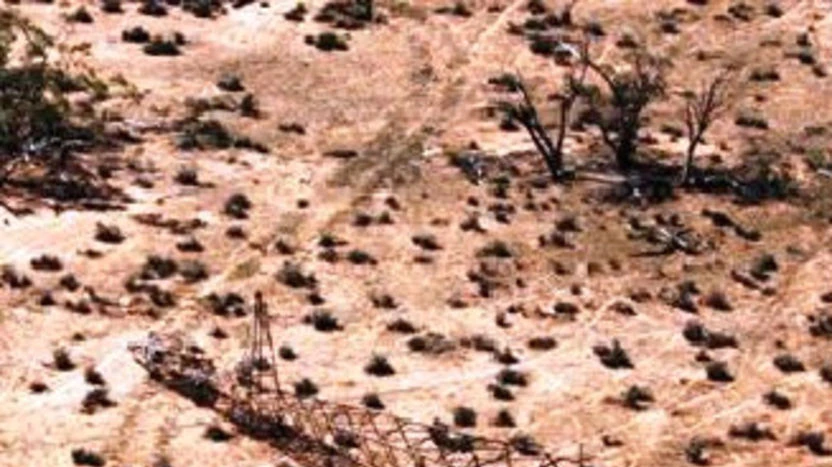
Source: ABC Five transmission towers snap at ground level and collapse during a dust storm close to Broken Hill. |
| 8th December 2008 | Dystart, QLD | Thunderstorms / Strong Winds | 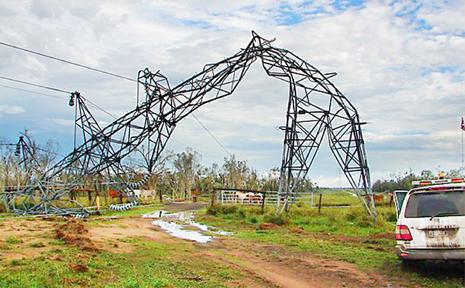
Source: Courier-Mail Seven transmission towers are severely damaged north of the town of Dystart during a summer thunderstorm. |
| 20th March 2006 | Innisfail, QLD | Tropical Cyclone Larry / Strong Winds | Five transmission towers along the Palmerston Highway and near the town of Babinda are destroyed by cyclonic winds. |
If you spot any missing incidents or have any corrections, please leave a comment below.
Depending upon location on the network, these incidents have had varying levels of impact on supply and security. While bushfires and flooding can affect structures in other ways, it’s more commonly wind-related events that have been their (literal) downfall. A 2020 CSIRO case study examined the risks of severe convective winds to transmission towers. The report highlighted that in relation to Australia’s aging transmission network, “Maintenance and upgrades consider several factors, including exposure, history of failure and physical condition of the tower, but generally towers are not systematically upgraded to today’s engineering standards.”.
Finally, it’s important to keep in mind that the list above only relates to such events on a transmission level. I can imagine that the list of incidents on the distribution network is an order of magnitude longer.
Final Conclusions
Hopefully this has helped paint a picture of how often these unexpected events have unfolded and how they pose significant risks to the power system. By looking at the timelines presented above, there may be some key lessons that we can take away:
- The number of possible contingency events that system planners and operators need to consider is enormous. Even the most abnormal event could present substantial system security concerns and economic repercussions without notice.
- The existing transmission network is aging. An AusNet Services report from July 2020 stated that the then-average age of transmission structures in Victoria was 52.6 years (the expected service life is 70 years).
- The NEM is becoming increasingly dependent on weather – and in ways that you might not expect. Transmission path diversity, proper maintenance, corrosion monitoring, etc. can mitigate risks to the physical network, but extreme weather events and natural disasters are inevitable, and conceivably more so with a changing climate. While we prepare for ‘when the wind doesn’t blow’, perhaps we shouldn’t forget what can happen ‘when the wind does blow’.


A list of Basslink failures would be great!
Given the distance of Cressy from Heywood and Portland the SA island resulting from the 31/01/2020 incident should probably be listed as the SA & Western Victoria island which raises the question of whether SA was able to supply the smelters at Portland and what were the possible/ likely consequences if not. Was SA reliant on renewable sources during the event and how did they perform? What fossil fuel sources were available to assist and how did they perform?
SA was, with the assistance of one fossil gas based generator in Victoria, able to cover the needs of SA and the very significant load of the Portland smelter. Due to the more limited options and the conservative approach of AEMO, many wind and solar farms were direct to shut down. At the time of the event the Hornsdale Power Reserve (Tesla Big Battery) was smaller and not capable of operating as a grid forming inverter (synthetic inertia). Nor where any wind or solar farms. The SA grid now has much more grid stability capacity from at least two batteries and one wind farm, so when SA separated recently far more wind and solar farms were able to keep operating. There is another large grid forming inverter based battery under construction in SA and others planned, so in the future there will be little to no need for fossil fuel based generation in SA to provide grid stability services even during a separation event.
Thanks Dan for hunting down all these transmission fails into one reference.
Re Basslink – I think I read at the TasFinTalk blog that Basslink has never paid its way.
The NEM currently operates in an old style grid where the timing signals for the phase angle and frequency is transmitted via AC transmission lines. This makes sense when the grid is dominated by large synchronous generation like coal and gas fired generators. However it is not the most accurate and creates greater risks when separation events occur. For years now it has been more accurate to have phase angle and frequency coordinated across large grids using atomic or similar reference clocks to drive grid forming inverters. Such as system has no issue with regard to frequency control when separation events occur. The cost of these highly accurate clocks and referencing systems have come down significantly to where they are less than a few thousand dollars, so can be installed at all sites in the NEM with grid forming inverters.
* Feb 2024, 120 km/h winds near Anakie, VIC, 6 towers, 530,000 homes, thunderstorm
* October 2024, Menindee, south of Broken Hill, to Tibooburra near the Queensland border, 7 towers, extensive blackouts